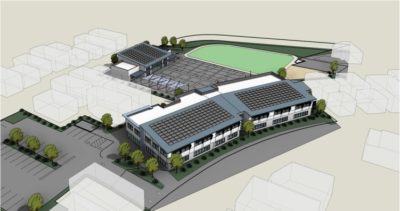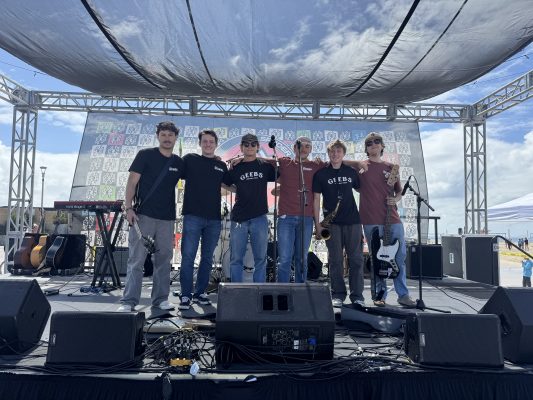Projected increases in construction costs have created a forecasted shortfall of about two percent in the budget for school district overhauls made possible by the passage of last year’s Measure S, building officials told the district last week.
In a presentation to the board of the Hermosa Beach City School District, representatives from Bernards, the construction management firm chosen to oversee Measure S projects, said that the combined total of “hard costs,” like bricks and cement, and “soft costs,” including permitting fees and building fixtures, totaled about $66 million. Sales from Measure S bonds, as well as bond proceeds from the state, mean that the district will have between $64-65 million available.
Rick Fochtman, senior vice president of management services for Bernards, said that the shortfall should be surmountable by with minor adjustments to plans.
“We think that gap can be bridged through value engineering. Now were tasked with different things we think we can do to save money…without sacrificing the programs. A two percent shortfall is definitely something we can take care of with a little value engineering,” Fochtman said.
Measure S provides funding for construction projects at Hermosa View and Hermosa Valley, but the lion’s share of the money will go toward new construction at North School, which the district is focusing on first. Plans for North will soon be submitted to the Division of the State Architect, and the project remains on schedule to open for the start of the 2019-20 school year.
The higher costs are due in part to conservative estimates about construction costs over the life of the projects, which are projected to continue through at least the summer of 2020. The projections include about $2.5 million in “escalation carry costs,” which reflects how much more expensive construction will be in the future when it is actually taking place.
This carry cost is large relative to the project’s size, and comes from high demand for school construction services and a labor force not big enough to meet them, Fochtman said. In the wake of the 2007-08 financial crisis, many building firms downsized. They have expanded with the improving economy, but not fast enough to meet demand. The result is that construction costs are increasing even faster rate than normal.
“You can typically set your clock by construction inflation at 3 percent. Right now we’re clocking about 4.5 percent, due to inflation in particular trades,” he said. Steel and wood framing are particularly impacted.
Pent-up demand for multi-family housing and mega-projects like the Los Angeles Stadium and Entertainment District at Hollywood Park are among the clients occupying the resources of the local building trades.
But school districts themselves are also part of the equation. Voters in neighboring Manhattan Beach approved approximately $150 million in school bonds in November. And districts across the state have been drawing up projects to apply for funds from Proposition 51, also approved in November, under which the state will issue $9 billion in bonds for school construction.
According to ballot information from the California Secretary of State, approximately one-third of Proposition 51 funds are set aside for new construction, and another third are devoted to modernization. Districts have to show some progress on project plans in order to apply to the state Office of Public School Construction for these funds, and Superintendent Pat Escalante has said that Hermosa got a head-start by approving Measure S in June.
However, exactly how much money the district gets from the state bonds may not be known for some time. The state has yet to begin selling Prop. 51 bonds, Escalante said. And HBCSD Business Manager Angela Jones said that Gov. Jerry Brown is likely to ask regulators to thoroughly scrutinize applications.
“In order for the governor to get behind this, there’s going to be a lot of auditing,” Jones said.











